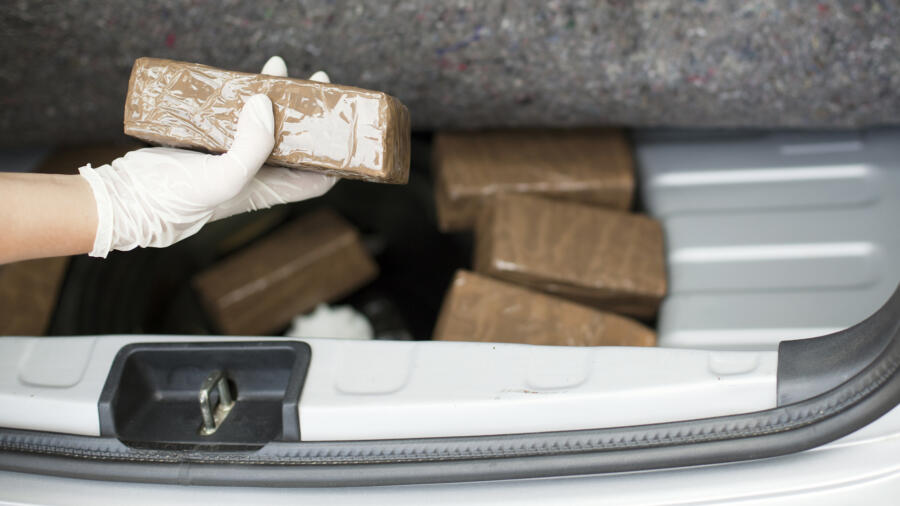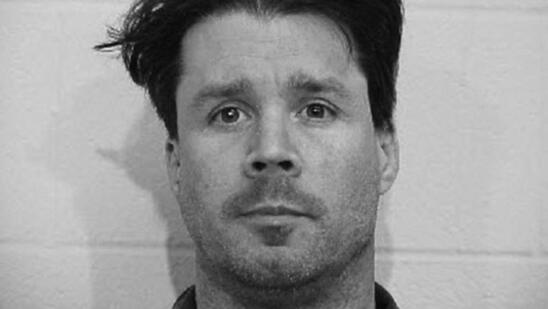Drugs are killing Americans in record numbers. The U.S. recorded more than 70,000 overdose deaths in 2017—roughly four overdose deaths for every homicide, according to the Centers for Disease Control and Prevention. More Americans died from drugs in 2017 drugs than all of those who perished in the wars in Vietnam, Iraq and Afghanistan combined.
Not all of America is being hit equally hard. Law enforcement and public-health workers battling the problem near Interstate Highway I-65—which runs south-to-north through Alabama, Tennessee, Kentucky and Indiana—are at its front lines, as that highway is a supply line favored by Mexican cartels flooding Appalachia and the American Midwest.
Sheriff Jamey Noel of Clark County, Indiana has seen the war on drugs as it has evolved over several decades. He’s spent 26 years in Indiana law enforcement. As sheriff, he’s put undercover police into his county’s jail system to try to root out the causes of the drug epidemic—work that has been televised on A&E’s 60 Days In and in 60 Days In: Narcoland. [Watch full episodes.]
Noel has seen various iterations of the drug trade as it’s come in from the nation’s southern border, watching both the smuggling strategies and the drugs themselves evolve over the years. The dealers his team is fighting, he says, are business geniuses.
“You think you’re ahead… [but] you can go backwards pretty quick,” Noel tells A&E True Crime.
One way drug task forces have to be alert, Noel says, is by recognizing that the cartels will shift what drugs they sell depending on which American communities they’re selling to. For example, Noel says, when state governments started cracking down on doctors for the overprescribing opioids, Mexican cartels flooded the market with heroin and opium to take advantage of the resulting scarcity. When heroin overdoses started rising, cartels switched to methamphetamines because those drugs didn’t have the same tarnished reputation.
“The Mexican cartels didn’t like all the bad press,” Noel says.
Such savvy maneuvering has turned pushers into billionaires. According to federal prosecutors in New York, Mexican drug kingpin Joaquín Guzmán Loera (aka El Chapo) made more than $12.6 billion funneling drugs across America’s southern border.
But for all the money the cartels are bringing in, there’s also been a tremendous cost. On the American end.
Communities Ravaged
Katy Tripp knows about the effect that drug abuse has on the individual level. As a clinical consultant for JourneyPure—a substance-abuse and mental-health facility in Murfreesboro, Tennessee—she assesses drug addicts when they’re first checking in for treatment.
“They’re not the same person anymore,” Tripp says of the patients, after years of abuse. According to Tripp, addicts will often show heightened aggression, deep apathy and appeared aged well beyond their years.
Before she did rehab work, Tripp worked as an undercover police officer on a drug task force for two years, in Middle Tennessee, in a department she can’t name because several of her cases remain open. All told, she’s done a decade of work fighting the war on drugs.
According to Tripp, the situation has gotten grimmer during her time doing the work.
“It’s easier to get,” Tripp says, noting that the internet and social media have sped up communication between dealers and users and stymied law-enforcement efforts.
The statistics bear this out. In 2017, Tennessee had 26.6 overdose deaths per 100,000 inhabitants—the state’s worst year on record.
“We’re not going to be able to arrest ourselves out of this problem,” Tripp says.
That said, she sees reasons to hope for a brighter future. On the law-enforcement side, Tripp says there’s been a shifting attitude over the last several years in how drug abusers are treated. Now, they’re more seen as diseased: victims of a crime, rather than merely accomplices.
“What’s making it better is having people try to bridge the gap between law enforcement and treatment facilities,” says Tripp, adding that police in Tennessee are more likely to direct users toward treatment facilities like the one where she works.
In Clark County, Sheriff Noel is seeing similarly shifting attitudes. He says that in the 1990s, there was an overemphasis on stiff sentencing, with an underemphasis on prevention and recovery.
“Our goal is to hit drug dealers hard, but to recognize if someone has an illness,” Noel says. In Indiana, that’s meant moving away from keeping people behind bars while they await trial, a recognition that a jail environment can exacerbate drug problems. The state’s bail system has thus been amended in a way that will allow more first-time offenders of limited resources to post bond and avoid lengthy pre-trial detainment.
“In the past, they would keep [drug abusers] in jail to keep them from overdosing,” Noel says. “Now we’re able to provide a lot more programs with substance-abuse providers.”
Policing Technologies
Treating drug abusers humanely is one element in the war on drugs, but it’s not the whole story. The police work being done inside the jail system has also changed. Sheriff Noel’s team piloted several creative methods for drug detection and covert intelligence gathering. For example, they’ve done lab testing on the waste water in the jail’s toilets, using inmate fecal matter to determine where precisely the county’s drugs are coming in from.
“The scientists can…source it to what area in the world it’s manufactured,” Noel says. “If it’s an opioid product, they can tell by the composition where it’s grown.”
Once they know where the drugs are grown, they can corroborate with other intelligence to determine how those drugs are entering the city. Heroin cultivated in the Middle East, for example, might be linked to dealers in Chicago. In that event, then, police would be alert with vehicles coming in from the north of the county, closer to Illinois. Drugs cultivated in Mexico, by contrast, would direct their attention south.
The latter example, says Noel, is far more frequent than the former.
“The majority of our drugs, whether it be meth or heroin—it’s coming from I-65.”
Related Features:
Watch Full Episodes of ’60 Days In: Narcoland’
Why Mexican Drug Cartels Leave ‘Calling Cards’ With Their Murder Victims


